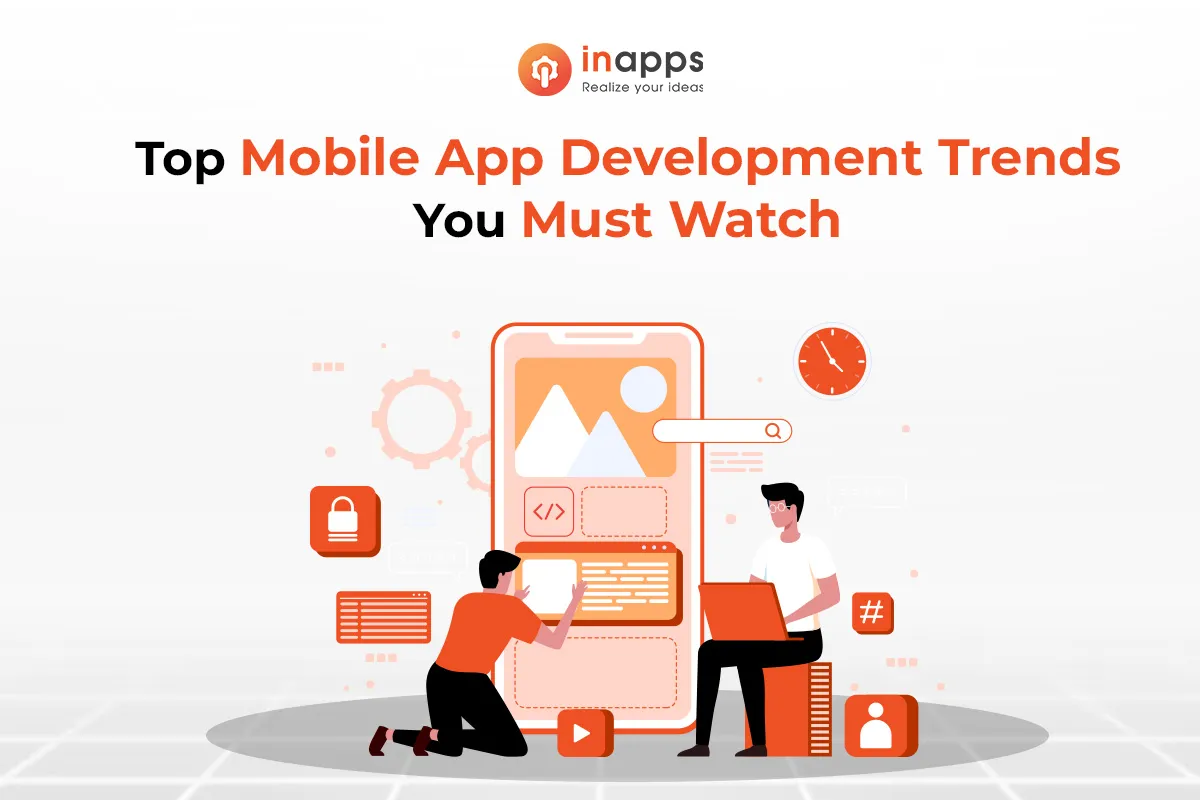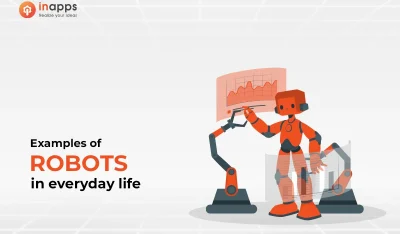The market observed a rapid growth in the number of phone-heavy users. The global smartphone market was valued at USD 457.18 billion in 2021 and is projected to grow to USD 792.51 billion by 2029, exhibiting a CAGR of 7.3% during the forecast period.
This goes to show that mobile-first solutions promise to unlock opportunities for any business that well-adopt them. But how can you help your business win the game?
In this article, you can gain helpful insight into mobile app development by looking at the latest mobile app development trends shaping the mobile landscape and trending programming languages.
Why it should be mobile app development?
The large smartphone user base
As of early 2024, there are approximately 6.93 billion smartphone users globally, which translates to about 85.74% of the world’s population owning a smartphone.

Number of smartphone users worldwide (2017-2022) retrieved from Statista
The number of smartphone users has increased by 49.89% from 2017 to 2022. By 2026, the number of mobile device users is expected to increase to 7.516 billion. It’s predicted that by 2025, 72% of all internet users will solely use smartphones to access the web.
The growth in mobile app users can contribute to a huge on the number of app downloads.
Heavy smartphone app usage
It’s not hard to see people surrounding you glued to their smartphones 24/7. A study pointed out that, on average, people spend about 4-5 hours in apps in Q2 2022.
Notably, the pandemic situation is the main reason driving app usage to spike across all categories from banking, shopping, and working to entertainment.
However, the data suggest that the pandemic may have led to longer-lasting impacts on app users. The evidence is that mobile consumers keep spending more time on their phones despite returning to the new normal.
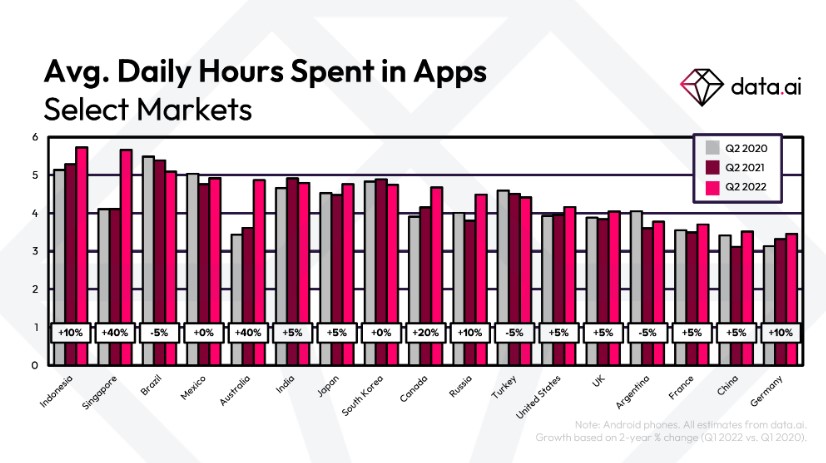
Average daily time spent in apps 2020-2022.
According to Smartphone Usage Statistics by demandsage, the average daily time spent on smartphones is around 3 hours and 43 minutes worldwide. In the United States, as of 2023, 48% of smartphone users spend 5 to 6 hours daily on their phones, while 22% use them for 3 to 4 hours.
Year-over-Year (YoY) growth for cell phone usage is expected to be at a stable 2-3% by 2025, potentially adding nearly one billion new users globally
Global app market forecast promises a bright future for mobile app development
Compared to 2022, the number of mobile app downloads in 2023 is projected to increase by 24 billion downloads.
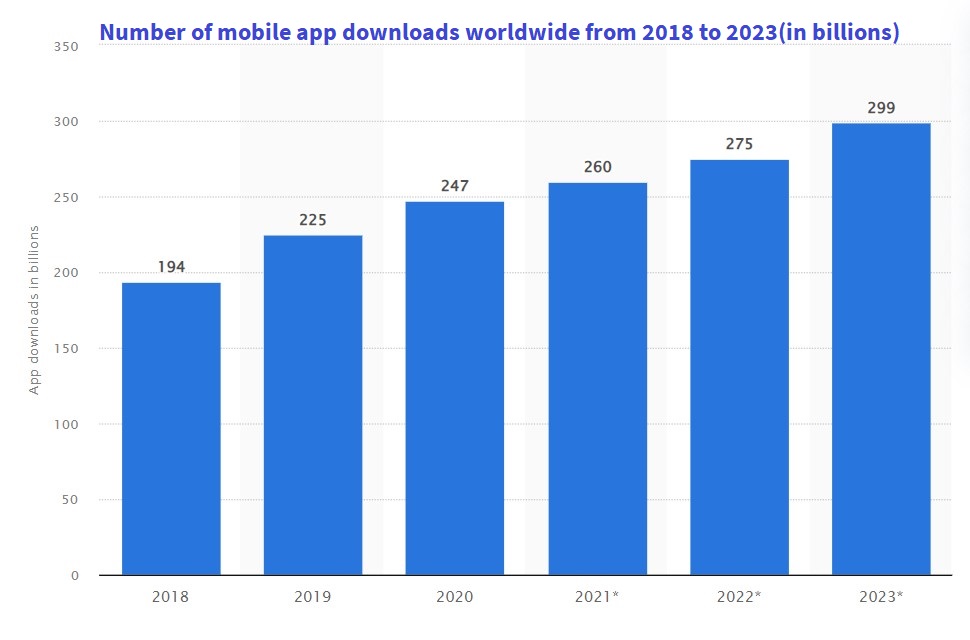
Number of mobile app downloads worldwide from 2018 to 2023 (in billions)
Meanwhile, the mobile app market share is expected to grow to more than $650 billion between 2020 and 2025, with a market growth momentum indicating a nearly 21% compound annual growth rate.
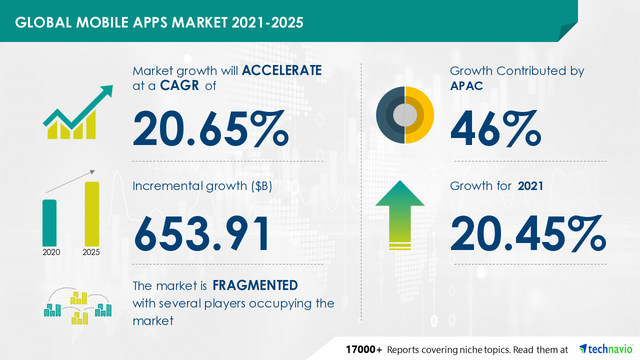
In other words, this trend indicates that mobile app development can expect to become more flourish in 2023 and beyond. This opens up opportunities for SMEs and individuals to join the game and be ready to become game changers at any time.
But how do you know which direction to take or what decisions can have an impact on your business?
Learning about the emerging mobile app development trends that are shaping the future of digital interactions can help you stay ahead of the curve. You’ll also get some insight into the possible direction that the app development industry is heading toward.
Top 9 prominent mobile app development trends in 2024
1. More AR apps
With the undeniable success of games like Pokemon Go or AR filters in messaging apps like Snapchat and Instagram, we’ve already seen how popular augmented reality applications may be.
And the trend is about to grow, as more businesses will try to implement AR to showcase their products. One of the examples of how to bring AR and retail together is the joint effort of Apple and IKEA to create an application that will help to showcase IKEA’s furniture in buyers house. It will use Apple’s ARKit, and the new products will first be available through the app.
If the app proves to be successful, other manufacturers from various industries will follow.
2. AI will change the tech
The advancements in AI have significantly influenced current mobile app technology trends.
It’s safe to say that AI has changed the way we interact with mobile apps. Virtual assistants like Siri, Cortana, and Google Assistant can now help us with gathering information, organize our schedules or optimizing our productivity.
The developments in Natural Language Processing and machine learning make virtual assistants more contextually aware, making their responses better and more accurate.
Machine learning is, according to Venture Scanning, the most funded category amongst AI-based ventures, reaching $2B.
At the same time, big companies like Facebook, Microsoft, Google and Amazon invest in solutions based on machine learning to create better conversational interfaces.
Last year, we saw mobile apps like Prisma, that used neural networks and AI to create what others thought a simple filter could do. The effect was stunning and we can expect other app developers to experiment with similar solutions.
3. Security remains developers’ top concern
Mobile devices are an increasing focus of cybercriminals.
- 30% of the known, zero-day vulnerabilities discovered in 2021 targeted mobile devices.
- The same year, there was a 466% increase in exploited, zero-day vulnerabilities used in active attacks against mobile endpoints.
- Furthermore, 75% of the phishing sites analyzed specifically targeted mobile devices.
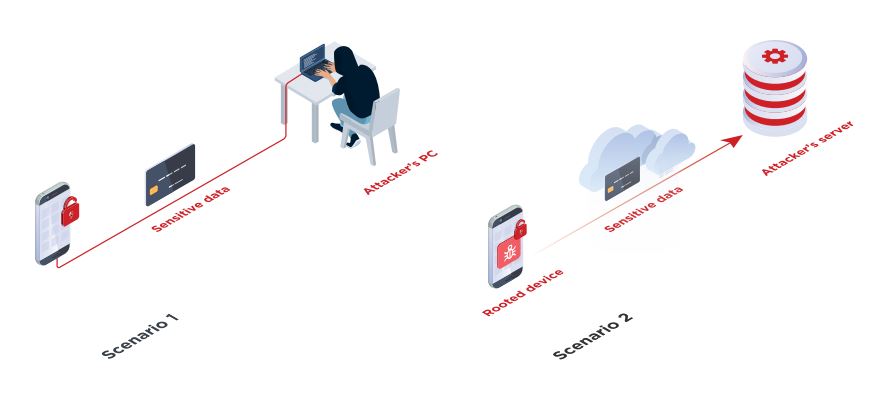
The general growth of the industry, billions of users, 3rd party SDKs and the vast number of user data being stored by the companies made security a top concern for mobile app developers.
We’ve already seen a growing trend of encrypted messaging apps like Telegram, mobile browsers protecting users’ privacy and an industry shift towards protecting user data, including Apple’s App Transport Security (ATS) and Google’s efforts to improve app permissions.
At the same time, both companies included automatic security updates for their OSes.
We’ll see more improvements in mobile security in 2024 and beyond, especially in mobile payments, data encryption and privacy protection.
4. Location-based applications
Location-based apps are going to expand among mobile application development trends, as location-based services (LBS) change how users interact with businesses.
Innovations in location intelligence and the ability to track places user visited, help marketers and publishers better target their customers, offering relevant ads.
We’ll see the growth of LBS-based apps in tourism and travel, navigation, security features, location-specific payment portals, and indoor mapping.
And with easily available APIs and Google map technology, it’s now easier than ever for mobile app developers to create location-based solutions for the users.
5. Android: Kotlin vs Java
Kotlin has become an alternative to Java for Android developers, similar to Swift and Objective-C on iOS. Its growing popularity and successful use in commercial projects make 2023 the year when Kotlin will finally take off on a bigger scale.
The reason for that is the ease of use.
Learning Kotlin for Java developers is pretty easy, as well as for C# developers, as both languages share some similarities.
Developers can also use Kotlin and Java in one project, as they work together smoothly. They can also use it with Android Studio, a tool from IntelliJ.
It also helps to avoid some Java pitfalls, like null references, which increases products’ quality.
That’s why Kotlin is being named “Java on steroids” and we will see more Android apps using it.
6. iOS: Swift will continue to grow
Swift continues to be a significant mobile app technology trend in 2024, as it is considered a powerful and easy-to-learn mobile programming language.
With its concise syntax and clear documentation, Swift in considered smoother in comparison to Objective-C.
And just like Kotlin and Java, Swift and Objective-C can be used in the same projects, with full access to Objective-C API.
Swift will maybe not take over Objective-C this year, but we’ll find more and more iOS applications based on it.
7. Accelerated Mobile Pages
Loading speed is still a crucial factor in mobile app development trends for mobile users.
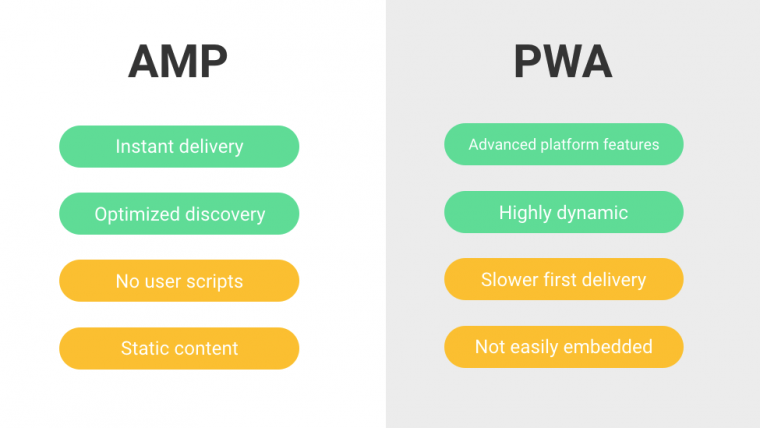
AMP and PWA comparison.
To improve it, Google has introduced Accelerated Mobile Pages. It is an open-source project aiming to improve mobile browsing experience. You can easily recognize AMP-based websites by searching Google on mobile, as they are marked as such.
Web developers, businesses, and publishers will need to consider this solution, as it not only improves the user experience on mobile but is also an SEO factor (AMP websites rank higher in Google).
Meanwhile, it is cheaper to develop and maintain the AMP than build a native or hybrid mobile application.
8. Progressive Web Apps
Shifting to Progressive Web Apps (PWAs) is among the most crucial mobile application development trends in 2024.
PWAs have been dubbed the next generation of mobile web apps. They are free from the constraints of mobile websites like slow speed and the need for constant Internet connection.
PWAs bring a native-like feel with various features. They include offline and full-screen modes, a home screen launcher, access to the camera, and push notifications. Plus, they are faster and consume less data than mobile websites.
Progressive Web Apps don’t require downloading and installation, which is the answer to mobile fragmentation and multiple operating systems.
Some companies, like the Financial Times, have already dropped native apps in favor of PWAs. Other ones like Twitter introduced a lighter, progressive alternative for their own native apps (e.g., Twitter Lite).
With the growing list of popular Progressive Web Apps, like Flipboard, AliExpress, or Telegram, we can expect a shift towards PWAs.
9. Android Instant Apps
Considering the high number of mobile apps in app stores, Google realized how daunting it is for users to download and update new apps.
That’s why the company introduced its Android Instant Apps, previewed during the Google I/O developer conference this year.
With Android Instant Apps, users can download only the most needed parts of the application. They can access the rest of the content instantly through the URL, thus saving space on the device. Android Instant Apps are being developed simultaneously with Google’s Progressive Web Apps.
According to Google, there have been 50 instant apps developed already. Developers can easily transform their native apps into instant ones, without the need to build a separate application.
Stay ahead of mobile app development trends with InApps
The right app can help make your brand or business more visible and accessible to your target audience. By staying on top of trends, you can incorporate novel ideas into your business, and have the opportunity to establish yourself as an authority in your niche.
Need to get more information about the mobile app industry? Contact us to get an expert consultation for your mobile app development query.
Let’s create the next big thing together!
Coming together is a beginning. Keeping together is progress. Working together is success.




